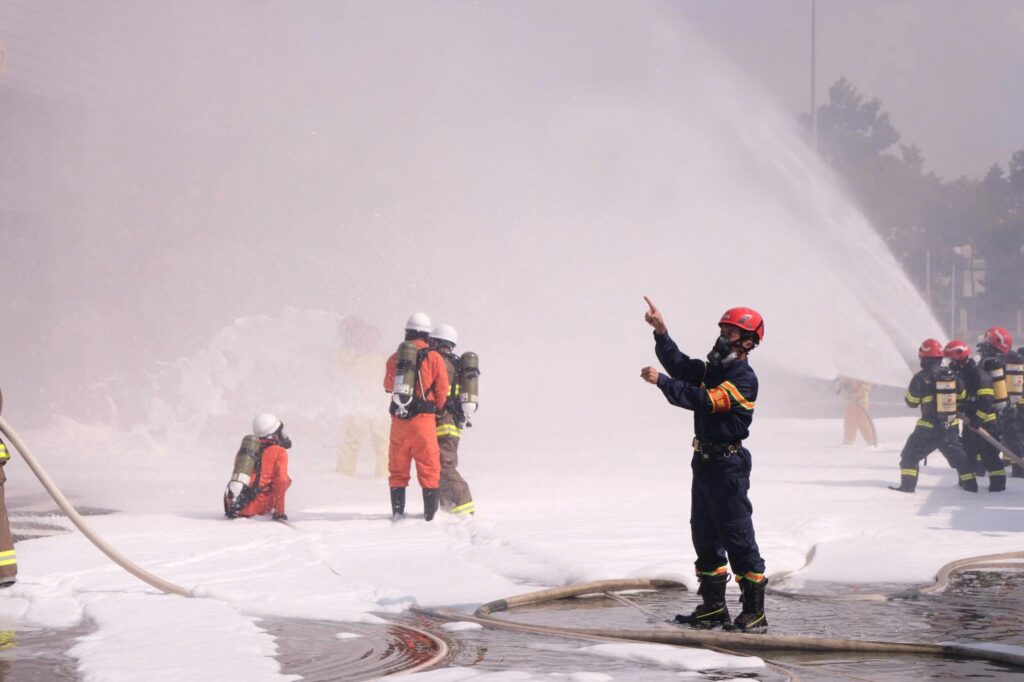For years, firefighting foam was used in training and emergencies without warnings about its long-term effects. The chemicals inside remain in the body and environment, creating health problems that surface years after exposure.
Kidney Cancer
Kidney cancer is one of the most common diagnoses tied to foam exposure, and many lawsuits focus on this condition.
Testicular Cancer
High rates of testicular cancer have been reported among firefighters and service members who worked closely with the foam.
Pancreatic Cancer
This cancer has also been linked to exposure and is often diagnosed late, making it especially devastating for families.
Other Cancers
Liver, prostate, and bladder cancers have appeared in people with a history of contact with the foam, and these cases continue to grow.
Lasting Health Problems
Beyond cancer, exposure has been connected to thyroid disease, immune system damage, infertility, pregnancy complications, and gastrointestinal disorders.
Environmental Contamination
The risk doesn’t stop with direct contact. Foam runoff has polluted groundwater and soil near training facilities and bases, putting nearby families at risk through their drinking water.
These health and environmental risks show why lawsuits over firefighting foam are being filed nationwide. Survivors and families are demanding answers after illnesses they were never warned about.
Why People File Firefighting Foam Lawsuits
People are filingfire fighting foam lawsuits because the companies that produced and sold the foam failed to warn about its dangers. Firefighters and service members used it regularly, trusting it was safe, while manufacturers had information showing otherwise. Communities near training sites and military bases have also been affected when the foam seeped into local water supplies, creating illness far beyond the workplace. These lawsuits are a way to hold corporations accountable for withholding critical safety information and to pursue compensation for the harm that followed.
Who May Qualify to File a Firefighting Foam Lawsuit
Eligibility depends on how and where exposure happened, as well as the health problems that followed.
Firefighters and First Responders
Men and women diagnosed with cancer after using foam in training or emergencies.
Military Service Members
Veterans and active duty personnel who were exposed on bases where the foam was stored and sprayed.
Families Near Contaminated Sites
Communities harmed when foam runoff polluted drinking water near airports or military installations.
Workers in Industrial Settings
Employees outside of fire services who handled the foam in warehouses, plants, or fuel facilities.
Families of Deceased Victims
Loved ones filing wrongful death lawsuits after a relative passed away from illnesses tied to foam exposure.
Our firefighting foam cancer attorneys review each situation individually to determine whether a case can move forward.
How Our Firm Can Help
When exposure to fire fighting foam leads to cancer or chronic illness, survivors and families need experienced support. Our firm has handled cases involving environmental contamination from PFAS chemicals that leached into soil and groundwater, and we know how to hold manufacturers accountable.
Free Case Review
We offer confidential consultations so individuals and families can learn whether their situation may qualify for a lawsuit.
Experience With Foam Exposure Cases
Our attorneys have worked on firefighter foam exposure claims and understand the unique challenges these cases present.
Nationwide Representation
We represent clients across the country, from firefighters to families affected by contaminated drinking water.
Resources to Take on Large Corporations
Our firm has the resources to challenge manufacturers that failed to warn about the dangers of AFFF.
Guidance Through Every Step
We explain the legal process in clear terms, keeping clients informed and supported from start to finish.
No Fees Unless We Win
There are no upfront costs to hire us. You don’t pay unless we win.
Why Timing Matters
Firefighting foam lawsuits must be filed within strict time limits set by each state, known as the statute of limitations. Waiting too long can close the door on a valid claim, even when the diagnosis is tied to years of exposure. Acting early also helps keep medical records and employment history, as well as site information, available for use in court. Once deadlines pass, the chance to hold manufacturers responsible may be lost. Speaking with our firm right after a diagnosis gives your case the strongest foundation.
Contact Us for a Free Case Review
A cancer diagnosis after foam exposure can leave families unsure of what to do next. Our attorneys offer free case reviews to explain your legal options and whether you may qualify for a firefighting foam lawsuit. There are no upfront costs, and we only get paid if compensation is recovered. Speaking with our team can help you understand your rights and decide on the next steps with confidence.

